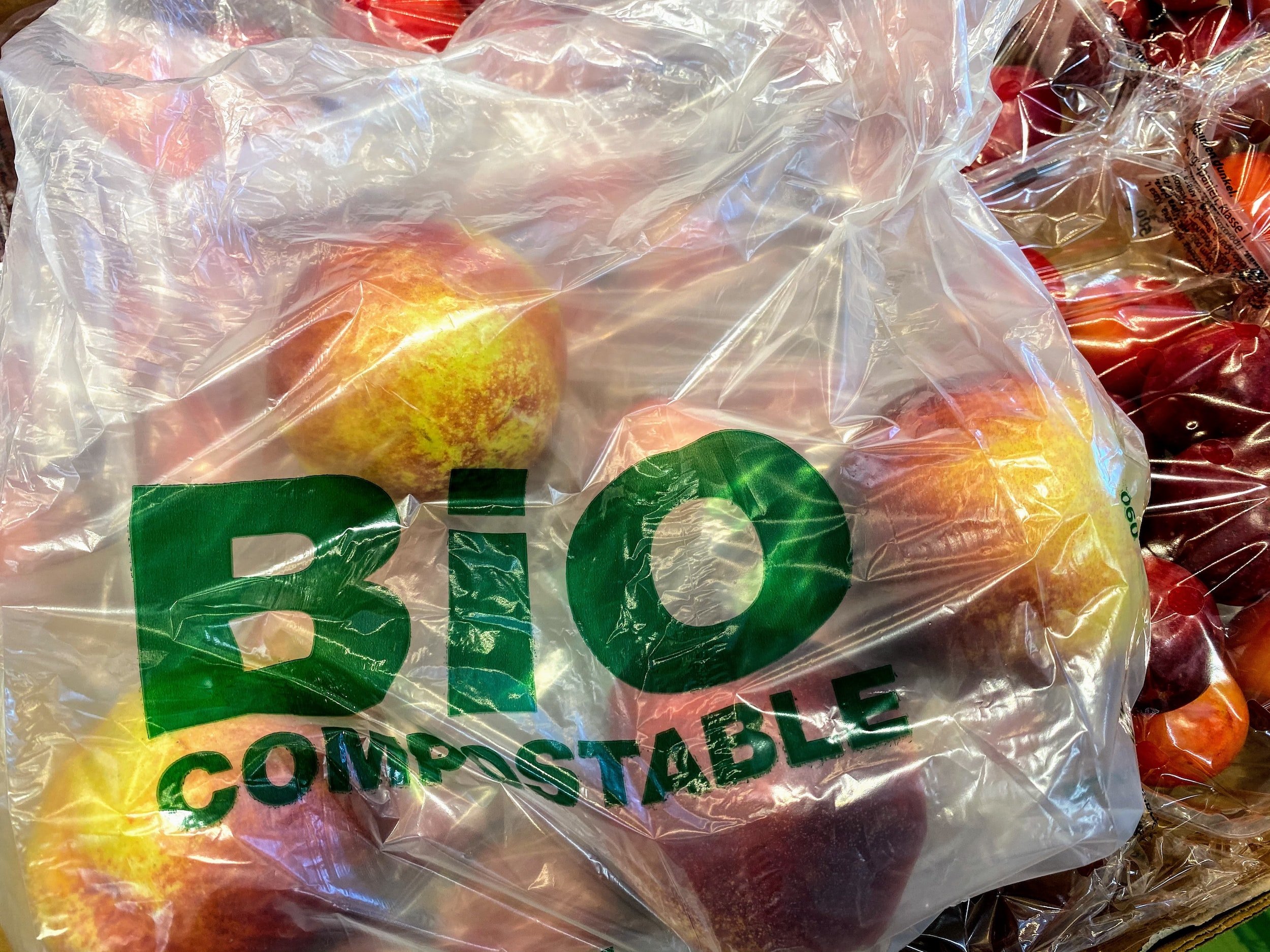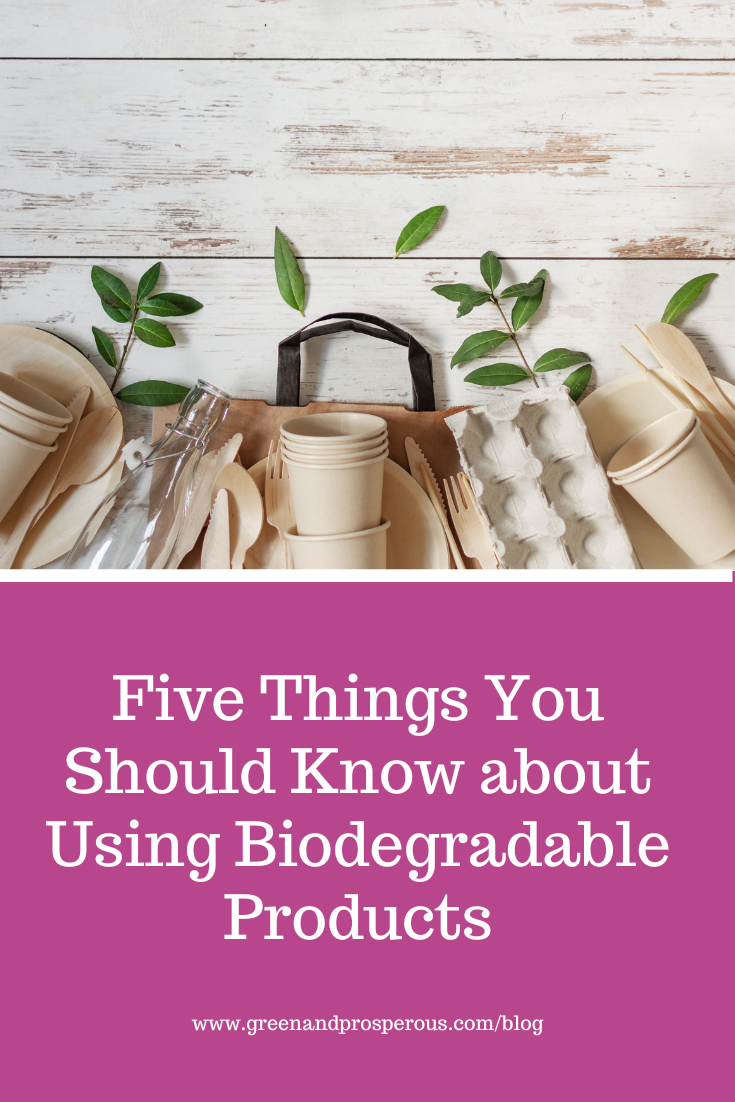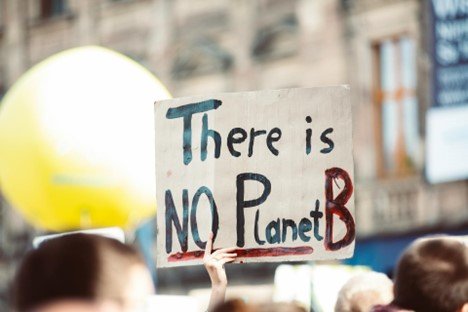Five Things You Should Know about Using Biodegradable Products
/Biodegradable materials have been used for decades but they've recently seen an increase in popularity due to environmental concerns. Nowadays people are looking for eco-friendly alternatives to conventional products. Using biodegradable products can be one way to go green. These products not only help the environment, but they're also better than their alternatives. However, they are not a complete solution to the problem of waste, and biodegradable products are not completely problem-free. Here are five things you need to be aware of when using biodegradable materials.
1. What Is Degradability?
Degradability refers to how long something takes to break down naturally. When we think of biodegradable products, we often think of things that take a long time to decompose, like plastic bags, plastic bottles, or Styrofoam containers. But did you know that some biodegradable products actually take less than 24 hours to completely degrade? There are many different kinds of biodegradable material available, including paper, cardboard, wood, and even compostable plastics.
2. Why Should You Use Biodegradable Products?
These days, it's easier than ever to choose biodegradable products over their non-biodegradable counterparts. Using biodegradable products helps reduce our carbon footprint. By using these products instead of non-biodegradable ones, we help prevent landfills from filling up with tons of trash. We also support the environment by reducing greenhouse gas emissions and helping to preserve natural resources. And finally, biodegradable products, unlike conventional plastic products, don't harm wildlife or pollute water supplies.
3. How Do You Know If Something Is Biodegradable?
There are three ways to know whether something is biodegradable or not, if its is not explicitly labeled as such. First, look at its ingredients list. All biodegradable products have at least 50% compostable content. Second, biodegradable products do not contain any synthetic chemicals, and are not manufactured with by using toxic chemicals . Third, most biodegradable products expire after three years, while others may last longer. The best way to find out how long a product will last is to look at the expiration date on the label.
4. What are the Main Types of Biodegradable Materials?
There are four basic categories of biodegradable material: paper, cardboard, wood and food packaging. Each type has their own pros and cons, so make sure you choose wisely.
Paper
Paper is the most common type of biodegradable product used around the world. It is made from cellulose pulp, which is a natural fiber derived from trees or grasses. The term ‘biodegradable’ means that it can be broken down by micro-organisms into carbon dioxide and water. Paper products are usually made from recycled fibers.
Paper comes in several forms, including newspaper, magazine inserts, office supply papers, etc. These products are great for recycling purposes, since they're already printed. However, they do require special handling before disposal.
Paper can be used to make all kinds of products, and paper straws are a better environmental alternative to plastic straws.
Cardboard
Cardboard is another commonly used biodegradable product. Also like paper, cardboard is commonly recycled. Cardboard boxes are perfect for shipping items around the world. Unfortunately, they aren't always recyclable due to their size.
If you're looking to recycle cardboard, you'll need to find a local recycling center where it's accepted. Some cities will accept cardboard from businesses, but not all locations may take this material. Your local grocery store may also collect cardboard, so be sure to ask. Alternatively, you can find ways to reuse cardboard. For example, you can turn a shipping box with Amazon.com labeling inside out and use it to ship a package. You can also turn cardboard into useful items for your home.
Wood
Wood is a renewable resource that doesn't need much processing to become usable. Wood pallets are a good example of this. Many people throw away old wooden pallets, but they can easily be reused as a sustainable coffee table or even as seating. Just cut off the nails and replace any damaged boards.
Of course, consumer products made from wood that has been newly sourced from old growth forests may not be a good choice, as it takes many decades for trees from old-growth forests to reach their full height. Certified sustainable sources of wood are a better choice. This means that the forest was managed sustainably, and that the timber came from areas where logging had occurred before the 1990s. It also means that the wood comes from forests which were not logged during the last 20 years.
The best option would be to look at certified sustainable sources of wood. This means that the forest was managed sustainably, and that the timber came from areas where logging had occurred before the 1990s. It also means that the wood comes from forests which were not logged during the last 20 years.
Food packaging
Although approximately 60% of the plastic manufactured for the consumer market is used to make food packaging, there are several different types of biodegradable materials that can be used instead.
One of these is grass. Grass is used to make biodegradable paper plates, cups, and flatware. It has also been used to make food containers. Most food packaging is made from petroleum-based plastics, which are not considered biodegradable. But there are some exceptions. For instance, glass jars and bottles can be recycled indefinitely, even though they don't break down quickly. Food packaging made from grass, however, is both biodegradable and recyclable, making grass-derived products a great option for anyone wanting to switch to biodegradable products.
Another closely related biodegradable material used for food packaging is bamboo. Bamboo is often mistaken as a wood product, as it can grow to a height of more than 100 feet tall. However, bamboo is 100% grass. Products made from bamboo are an even better choice than many kinds of wood from a sustainability viewpoint, as bamboo grows quickly and is easily replaced after harvesting. Bamboo is also a great renewable resource that can be used for many different purposes, including container lids and boxes, bread boxes and serving bowls.
Aside from these , rice husks, gelatin films, and even the large leaves of banana plants and water hyacinths make eco-friendly, biodegradable food packaging options.
5. Not all biodegradable products are eco-friendly
It's usually best to use biodegradable products rather than non-biodegradables, but there are times when using biodegradable products isn't as environmentally friendly as it might appear. For example, some bio-degradable products may not break down completely, while others may produce harmful byproducts during their breakdown. They may be expensive to manufacture, so they're not within the budget of people who are struggling financially.
Finally, using biodegradable products may encourage a single-use mindset in which we feel better about the waste we generate when a product is promoted as being biodegradable. In other words, using biodegradable products might encourage us to think of our waste as something that can be easily disposed of. The fact is, it's not enough to recycle on a regular basis; it's even more important to find more ways of reducing consumption.
Choose wisely, be informed
Although biodegradable products are not a cure-all solution for tackling the environmental waste that threatens the survival of our planet, they do have many advantages over non-biodegradable products. They're better for the environment, they use fewer resources than non-biodegradable products, they're more sustainable, and they don't contribute to the problem of overflowing landfills the way plastic waste and other non-biodegradable products do.
Like this? Please pin!
Biodegradable products offer numerous advantages, making them the better option. The next time you shop, be sure to choose biodegradable products over their non-biodegradable counterparts as much as possible. Biodegradable products aren't completely free from environmental concerns, but they're usually a better choice for the planet than non-biodegradables.











































Moving, often seen as a necessary but wasteful activity, can actually be an opportunity to implement eco-friendly strategies that minimize waste and conserve resources. With Plano's strong community focus on sustainability and green living, there are numerous local resources and initiatives to help you make your move as environmentally friendly as possible. This guide will provide you with practical tips and innovative ideas to ensure that your move not only goes smoothly but also aligns with the best environmental practices. Embrace these strategies to protect our planet while transitioning to your new home in Plano.